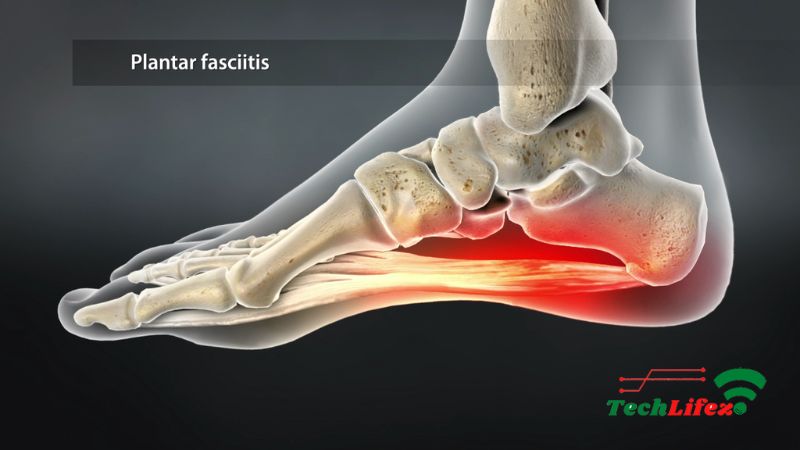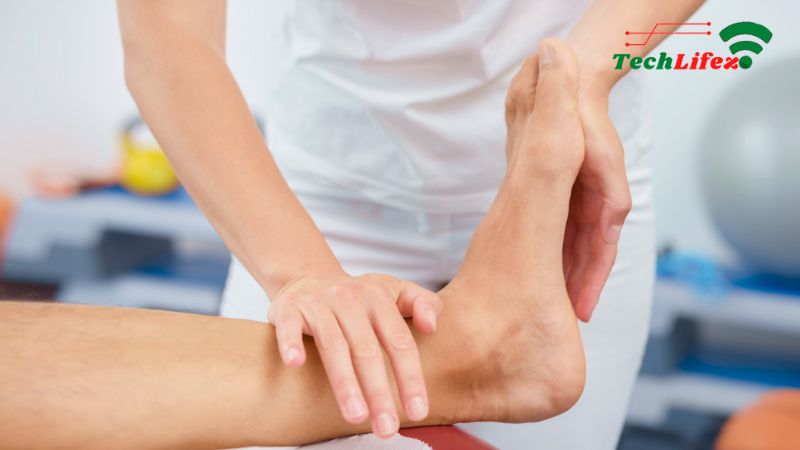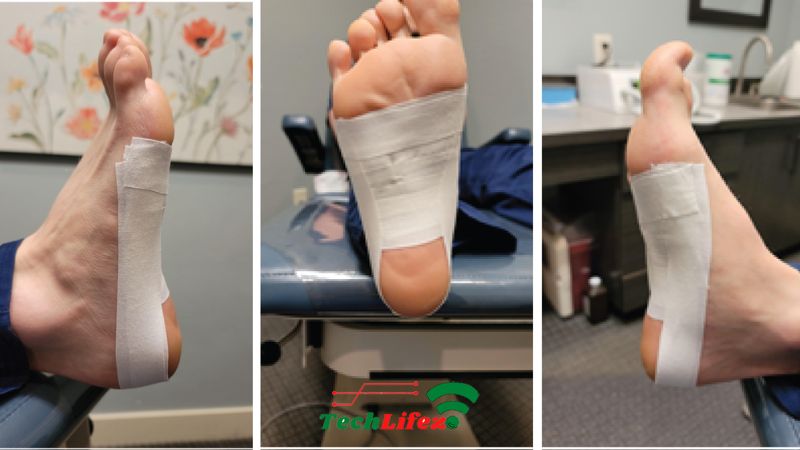Plantar fasciitis, a prevalent affliction affecting millions globally, can prove to be a persistent source of discomfort and constraint. Characterized by inflammation of the plantar fascia, the robust band of tissue spanning the underside of the foot, this condition can significantly impede mobility and diminish one’s quality of life. Amidst a plethora of treatment options, one approach gaining increasing recognition for its efficacy is massage therapy. The benefits of massage for plantar fasciitis by Techlifez transcend mere relaxation, offering a multifaceted strategy for alleviating symptoms and fostering healing.
Contents
Understanding Plantar Fasciitis
Before delving into the benefits of massage therapy, it’s imperative to grasp the intricacies of plantar fasciitis. This condition typically manifests as acute, stabbing pain proximate to the heel, often most pronounced upon initial weight-bearing in the morning or following prolonged periods of rest. The plantar fascia, a crucial structure supporting the foot’s arch and absorbing shock during ambulation, becomes inflamed due to a variety of factors including overuse, improper footwear, biomechanical anomalies, or other contributing variables. Left unchecked, plantar fasciitis can evolve into a chronic state of discomfort, severely hampering one’s functional capacity.
The Role of Massage Therapy
Massage therapy, a therapeutic practice with roots spanning centuries, offers a holistic approach to managing plantar fasciitis. By employing targeted manipulation techniques to address the affected tissues, skilled massage therapists can effectively target both the symptoms and underlying etiology of this condition. Let’s explore the myriad benefits of massage for plantar fasciitis in comprehensive detail:
- Alleviation of Pain: Among the most immediate and tangible benefits of massage therapy for plantar fasciitis is the amelioration of pain. Through precise pressure application and manipulative maneuvers, massage therapy serves to alleviate the discomfort associated with inflamed plantar fascia, thereby affording individuals a greater degree of freedom and comfort in weight-bearing activities.
- Enhanced Circulatory Function: Massage therapy serves to stimulate blood flow to the afflicted region, thereby facilitating the transportation of oxygen and vital nutrients crucial for tissue repair and regeneration. This augmented circulation also aids in the removal of metabolic byproducts, thereby mitigating inflammation and fostering an environment conducive to tissue healing.
- Scar Tissue Remodeling: Over time, untreated plantar fasciitis can precipitate the accumulation of scar tissue, further compromising tissue flexibility and functional integrity. Massage modalities such as deep tissue massage and cross-friction massage are particularly efficacious in breaking down these adhesions, thereby restoring tissue suppleness and mitigating stiffness.
- Inflammatory Modulation: Inflammation constitutes a hallmark feature of plantar fasciitis, contributing significantly to pain and tissue degeneration. Massage therapy serves to promote lymphatic drainage, facilitating the removal of excess fluid and inflammatory mediators from the afflicted tissues, thereby attenuating swelling and associated discomfort.
- Augmented Range of Motion: Restricted range of motion represents a common impediment for individuals grappling with plantar fasciitis. By incorporating targeted stretching and myofascial release techniques, massage therapy aids in enhancing flexibility within the foot and ankle complex, thereby fostering smoother, more coordinated movement patterns and diminishing the likelihood of further injury.
- Stress Mitigation: The chronic pain attendant to plantar fasciitis can precipitate significant physical and emotional distress. Massage therapy, through the induction of a profound state of relaxation, triggers the release of endogenous endorphins whilst concurrently diminishing levels of stress hormones such as cortisol. This dual action serves to engender a profound sense of tranquility and equanimity, empowering individuals to confront their symptoms with greater resilience and fortitude.
- Facilitation of Healing Processes: Beyond mere symptomatic relief, massage therapy engenders an optimal milieu for the body to effectuate its intrinsic healing processes. By stimulating the body’s innate reparative mechanisms and fostering a state of homeostasis, massage accelerates the pace of recovery, enabling individuals to resume their customary activities with renewed vigor and comfort.
Integration into Treatment Protocols
Massage therapy undeniably offers significant benefits for individuals suffering from plantar fasciitis; however, it’s crucial to embrace a comprehensive and integrative approach to treatment. Incorporating massage into a multifaceted regimen alongside targeted stretching exercises, orthotic interventions, biomechanical corrections, and physical therapy enhances its effectiveness. Collaborating with a knowledgeable healthcare team ensures that massage therapy is utilized strategically and synergistically, maximizing outcomes for those managing plantar fasciitis. By embracing a holistic approach, individuals can address the root causes of their condition and experience comprehensive relief and long-term management of plantar fasciitis symptoms.
Conclusion- Benefits of Massage for Plantar Fasciitis
In summation, the benefits of massage for plantar fasciitis are manifold and far-reaching. From pain alleviation and enhanced circulatory function to augmented mobility and stress reduction, massage therapy offers a holistic panacea for the management of this prevalent foot ailment. By incorporating massage into comprehensive treatment regimens, individuals afflicted with plantar fasciitis can derive respite from their symptoms and reclaim agency over their lives. Embracing the therapeutic potency of touch, we can forge a pathway to enhanced comfort, mobility, and well-being for those contending with the challenges of plantar fasciitis.




